| Films about Yamagata |
|---|
|
|
Part 1 The Man Who Shot Zao: Tsukamoto Koji
The juhyo, trees covered in fog-turned-to-frost, are artworks of nature. They are only seen in mountainous parts of northeastern Japan, and the juhyo of that region’s Mt. Zao, in Yamagata Prefecture, are the most famous. The first person in the world to film Yamagata’s juhyo and show them to people outside of Japan was Tsukamoto Koji. It would be enough for the purposes of “Films about Yamagata” just to introduce the world’s first film about Mt. Zao, but I’d also like to examine director Tsukamoto Koji in a little bit more depth.
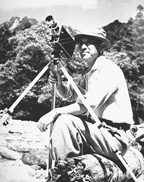 Terada Torahiko, known as a physicist as well as an author, wrote an essay for Eiga Hyoron in 1935 in which he describes having seen a short film of Tsukamoto’s. Despite the fact that the film was silent, Terada claims in the text to have heard all the flute and drum sounds within the movie.
Terada Torahiko, known as a physicist as well as an author, wrote an essay for Eiga Hyoron in 1935 in which he describes having seen a short film of Tsukamoto’s. Despite the fact that the film was silent, Terada claims in the text to have heard all the flute and drum sounds within the movie.
Terada dismisses his own impression in true academic fashion, suggesting he must have been confused by a train outside the theater and the growling of the projector, but when I saw Tsukamoto Koji’s films, I felt it’s not enough to say that Terada only heard auditory illusions.
Tsukamoto’s meticulous composition and humorous direction easily surpass the form we know as “documentary film,” and before long, sounds that surely aren’t there reach our ears as a vivid extension of the charming images on the screen. Tsukamoto’s movies have that power. It would no longer be an exaggeration to refer to “Tsukamoto Koji films” as a separate genre.
As you watch Mount Zao, unavailable to the public for many years, as well as all the mountains Tsukamoto filmed and his other works, we hope you will enjoy learning about the director Tsukamoto Koji, the genre of “mountain films,” and prewar Yamagata.
—Saito Kenta
Alpine
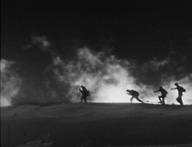 YIDFF Opening Screening
YIDFF Opening Screening
Mount Zao
- 1935 / Silent / English intertitles / B&W / Video (Original: 16mm) / 12 min
Director: Tsukamoto Koji
Source: Tsukamoto Hiroshi, NHK Archives
A party of visiting mountain skiers takes refuge from bad weather at Takayu onsen, a hot spring. Before long, they delight in the fair weather that greets them, and they ski down past the dense growth of juhyo on Mt. Zao. A work of art in which there is beauty in the silhouettes of the skiers and mountain ridges against the sun, as well as in the endless stands of juhyo everywhere one looks. In 1936, it won the top prize for landscape photography at an international contest in England, as well as many prizes at other foreign festivals. This memorable work provided the opportunity to acquaint people both inside and outside of Japan with Mt. Zao’s frost-covered trees.
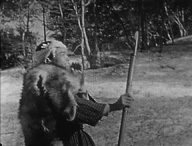 Bear Hunting on the Snowy Ridges
Bear Hunting on the Snowy Ridges
(“Setsuryo ni kuma o karu”)- 1936 / Silent / Japanese intertitles / B&W / Video (Original: 16mm) / 29 min
Director: Tsukamoto Koji
Source: Tsukamoto Hiroshi, NHK Archives
In one of Japan’s most prominently snowy areas, Oguni Town in Yamagata, there lives a group of huntsmen called the matagi. Accompanying them as they hunt bears, a film crew plows through the Iide mountain range. The camera captures the fascinating customs of the matagi, Iide’s many beautiful snowy valleys, and the thrilling moments of bear hunting. A pearl of a movie, in which the people living in the mountains and the mountains that provide them their living are filmed with skillful composition and abundantly humorous direction.
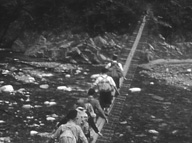 Tanzawa, Kurokura River
Tanzawa, Kurokura River
(“Tanzawa, kurokura-gawa”)- 1940 / Silent / Japanese intertitles / B&W / Video (Original: 16mm) / 21 min
Director: Tsukamoto Koji
Source: Tsukamoto Hiroshi, NHK Archives
A group goes up the Kurokura River in Tanzawa in Kanagawa Prefecture. Featuring the violent and even beautiful fury of nature, and happy companions on a treacherous but exciting journey, this film is packed with all the elements of a classic Tsukamoto production.
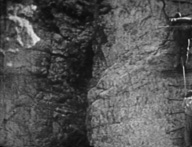 Kurobe Gorge
Kurobe Gorge
(“Kurobe keikoku”)- 1932 / Silent / B&W / Video (Original: Unknown) / 25 min
Director: Tsukamoto Koji
Source: Tsukamoto Hiroshi, NHK Archives
In August 1932, a film crew rides a freight car deep into the heart of Kurobe Gorge. A suspension bridge through whose cross planks one can see the depths of the valley below, a log trail bound to the side of a cliff . . . A stately panorama of the days before the construction of the Kurobe Dam spreads out on the screen.
* Kurobe Gorge will be screened with the “Imperial Capital” program for purposes of time.
Imperial Capital
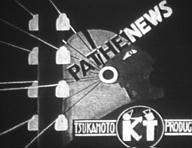 Pathe News
Pathe News
- 1927–28 / Silent / B&W / Video (Original: 9.5mm) / 9 min
Director: Tsukamoto Koji
Source: Tsukamoto Hiroshi, NHK Archives
• New Year’s Festival of Firefighters (Marunouchi, Tokyo, January 6, 1928) • The Ski-man’s Day (Myoko, Echigo, February 5, 1928) • Flying Competition (Yoyogi, Tokyo, November 4, 1927) • Fighter Plane Crashing Off Tsukishima (March 6, 1927) • Akabane Army Signal Corps Training (May, 1927) • Beginning of Spring Flower Festival • Koganei (April 17, 1928) • A Baby Pigeon Is Born (April 1927) • Negishi Horse Racing (Yokohama, November 12, 1927) • Motorcycle Competition (Tsuchiura, Ibaraki, June 18, 1927) • Photo Session at the Oriental Company (May 6, 1928) • Sakai Chiyoko’s Gavotte • Musical of the Moment • Murayama Reservoir Spout • more
Vivid scenes of Showa—as well as the last vestiges of the Taisho Era—can be seen in this fast-moving rotation of films. From this collage of recordings, images out of the collective memory, a fragmentary understanding of the era can be reached.
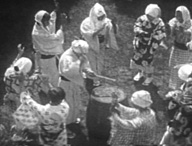 Rural March
Rural March
(“Denen koshinkyoku”)- 1930 / Silent / B&W / Video (Original: Unknown) / 3 min
Director: Tsukamoto Koji
Source: Tsukamoto Hiroshi, NHK Archives
Farmers harvesting rice, faces full of joy at the abundant crop. Amidst drum and flute, a feast celebrating the harvest. A work of no small merit vividly showing a slice of life from an early Showa agricultural community.
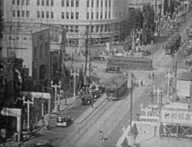 Spring in the Imperial Capital
Spring in the Imperial Capital
(“Teito no haru”)- 1932 / Silent / B&W / Video (Original: Unknown) / 10 min
Director: Tsukamoto Koji
Source: Tsukamoto Hiroshi, NHK Archives
Morning at the Tsukiji Fish Market, the cherry blossoms and their admirers in Ueno Park, and the neon of Ginza in the middle of the night . . . A profoundly interesting film showing the patterns of Tokyo in spring circa 1932.
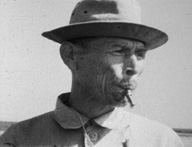 Hunting Methods on Imperial Household Ministry Preserves: Plover Hunting
Hunting Methods on Imperial Household Ministry Preserves: Plover Hunting
(“Kunaisho hozon shuryoho: Chidori ryo”)- 1936 / Silent / B&W / Video (Original: 16mm) / 10 min
Director: Tsukamoto Koji
Source: Tsukamoto Hiroshi, NHK Archives
Traditional plover hunting in the tidelands on the border between Tokyo and Chiba is introduced, interweaving scenes showing the tensions of the hunters and the elaborateness of the decoys used to lure the prey. The netting sequences are a must-see!
